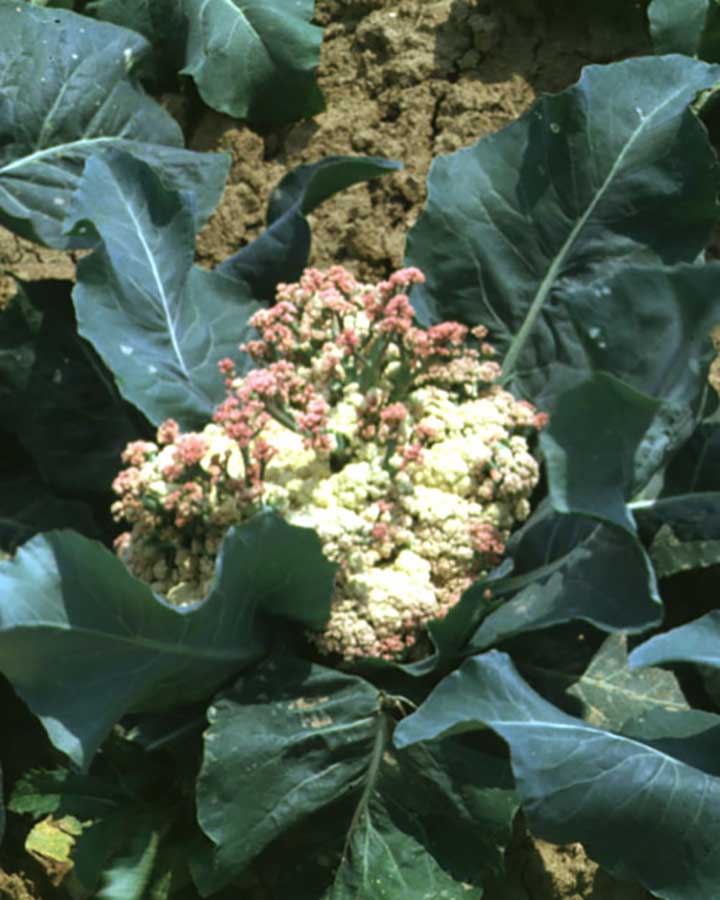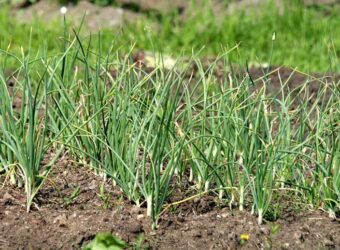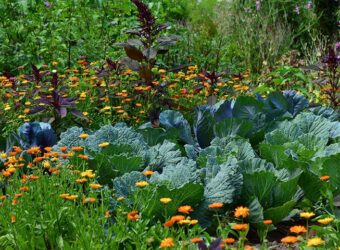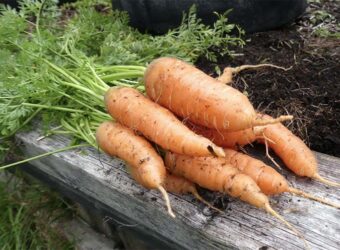Cauliflower (Brassica oleracea, Botrytis group) is a very popular vegetable to grow. However, it is somewhat temperamental and will bolt if conditions are not just right. Bolting means the flowers in the head begin to separate, and a flower stalk begins to grow.
Cauliflower just produces one head, so if it bolts, you have wasted your time and resources growing it. Read on for the cause of bolting and how to prevent your cauliflower from bolting.
Why Are My Cauliflowers Bolting?
Cauliflower bolts when it is subject to a period of cool weather (35-50 degrees F for ten or more consecutive days) after a stretch of warm weather and longer days. This weather tricks the cauliflower into thinking it has gone through summer and winter, and it bolts when warm weather returns.
How to Identify Cauliflowers About to Bolt
When cauliflower is about to bolt, the flowers in the head will start to separate.
If you see that, you need to harvest the head immediately. Likewise, if a heat wave is in the forecast, harvest the cauliflower head before the hot weather hits.
What You Should Do When Bolting Happens
If the cauliflower bolts, pull up the plant and put it in the compost pile or trash. The plant only produces one head, so once it bolts, it is no longer of any use.
How to Prevent Cauliflowers from Bolting
Bolting can be challenging to prevent. While the temperature causes cauliflower to bolt, any stress on the plant can make things worse. The best way to ensure cauliflower does not bolt is to grow it under optimal conditions. Here is what your cauliflower needs.
Temperature
Cauliflower grows best on sunny days of around 70 degrees F temperatures. However, it will not form a head when the temperature gets over 80 degrees.
Sunlight
Cauliflower needs at least six hours of sunlight. In warmer climates, afternoon shade is appreciated. Shade cloth can keep the plant cool longer in hot climates.
Water
If cauliflower does not get enough water, it will trigger bolting. The soil should be moist but not soggy. Make sure cauliflower gets 1-1.5 inches of water a week from a combination of rain and irrigation.
Fertilizer
Ideally, you would do a soil test where you will be growing cauliflower. The results will suggest what fertilizer to use. Without a soil test, use a fertilizer formulated for vegetables.
Before planting, fertilize the area according to the label directions and work the fertilize in the first three inches of the soil.
Mulching
Spreading three inches of mulch around the cauliflower plants will help keep the soil cooler in the heat. It will also hold moisture and gradually release it to the plant.
Leave an inch margin around the plant, so the mulch does not touch the stalk.
Blanching
White cauliflower heads will get sunburned and not taste good unless you blanch them. When the head is about 2-3 inches in diameter, pull the leaves on each side of the head up over the head.
Use a clothespin or other fastener to hold the leaves loosely over the head. You will have to adjust the leaves over the head as it grows.
Here are some additional tips to limit stress on your cauliflower.
- Do not buy big transplants – Use ones with four or five true leaves. Larger transplants have gone through warm temperatures and may be root bound. They are more likely to bolt with these problems.
- Control pests and diseases – Both stress the cauliflower.
- Space your transplants two feet apart in rows thirty to thirty-six inches apart – This spacing gives the plants plenty of room to grow and lets air circulate around the plant.
- Grow slow-bolting or bolt-resistant cauliflower varieties.
- Cauliflower is less likely to bolt when grown in the fall.
Slow-Bolting Cauliflower Varieties
Fast-growing cauliflower varieties are more likely to bolt. However, you may need to plant fast-growing varieties if you have a short gardening season. Here are some cauliflower varieties that are less likely to bolt.
Cheddar F1
This orange hybrid is slow to bolt and produces an attractive head that is ready to harvest in 60-70 days. The head has a sweet, mild taste. The orange color deepens when cooked.
Di Sicilia Violetta
This heirloom variety produces a purple head in 70-80 days. It has a nice, nutty flavor.
Snow Crown F1
This white hybrid produces a head quickly and has some frost tolerance. Therefore, it is a good choice for planting in the fall if you only have a short growing season. This variety matures in 50-55 days.
Amazing
This white variety tolerates both heat and cold better than most varieties. It takes 68 days to mature.
Early White Hybrid
This cauliflower variety can mature in as little as 52 days after transplant. It has some cold tolerance, so it is another good fall variety if you have a short growing season.
Flame Star Hybrid
Another orange variety, this is lighter than the Cheddar F1. It is more heat tolerant than most varieties and is ready to harvest in 55-60 days.
Song TJS-65
This is an Asian hybrid and grows well in hot, humid areas. The top of the head is white, but the underside is green. The head can be harvested while still tight and about six inches in diameter or allowed to grow until the head just starts to separate. Growing until the head separates will yield nice size stems to make it easier to dip the florets in salad dressing or dip.
Frequently Asked Questions
Can you eat cauliflower that has bolted?
Yes, if you harvest it immediately. However, once the cauliflower fully bolts, the head will become bitter and taste bad.
Will bolted cauliflower grow more heads?
No, cauliflower only grows one head, and once it has bolted, it won’t grow anymore.
Is bolting good for cauliflower?
No, it means something has gone wrong, and the plant is producing seeds prematurely.
Does cauliflower die after bolting?
It dies after it produces seeds.
Getting a cauliflower head depends on the slow, steady growth of the cauliflower plant. Anything that stresses the plant interrupts the steady growth and can cause the cauliflower to bolt.
While you cannot control the weather, you can control other aspects of gardening. Make sure the plant has enough water, sunlight, fertilizer, and mulch to successfully grow a cauliflower head that doesn’t bolt.






